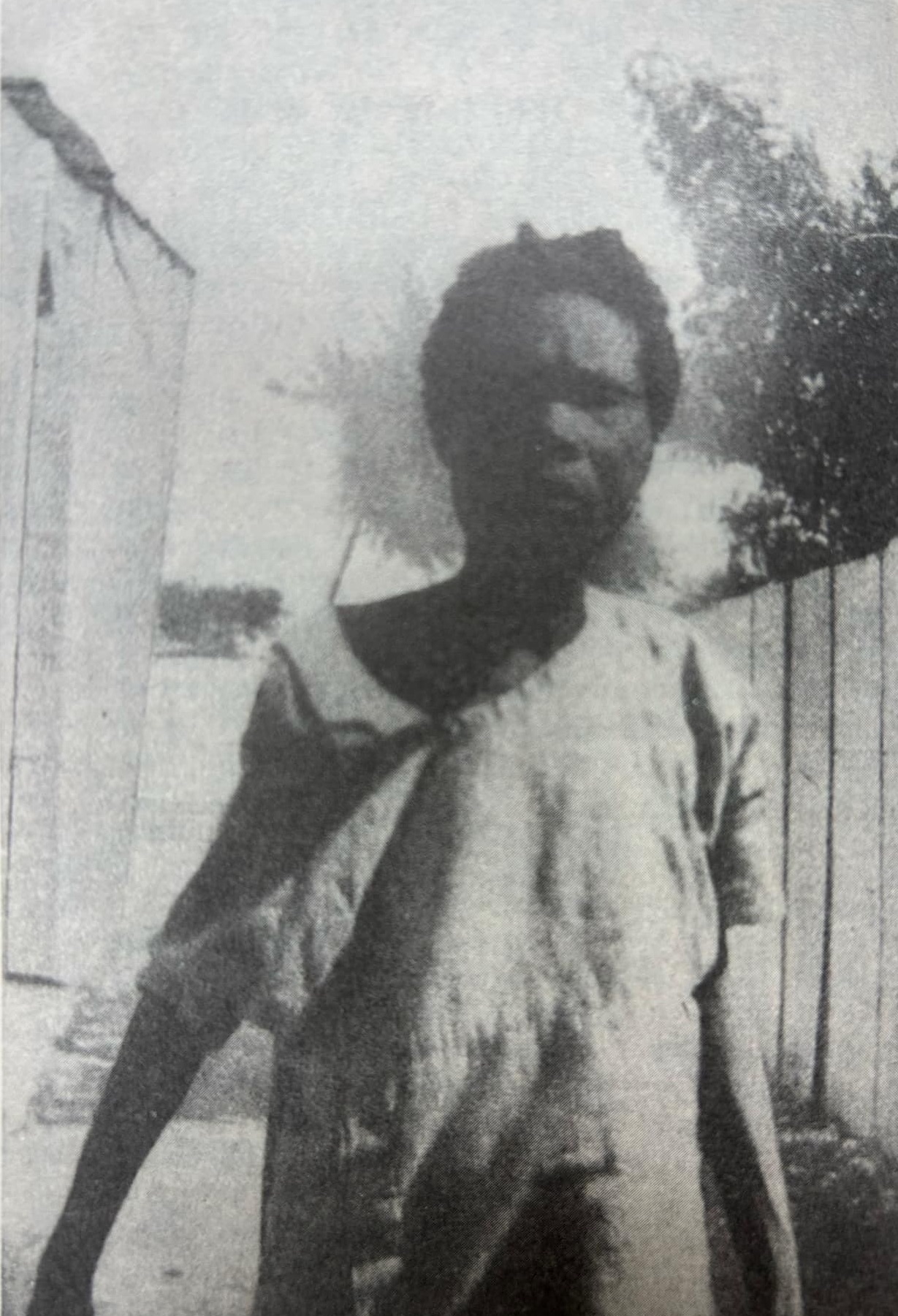
ゾンビの人類学
Anthropological Zombie or Anthropology as Zombie existence

Felicia
Felix-Mentor as a Haitian Zombie from Zora Neale Hurston's "Tell My
Horse: Voodoo and Life in Haiti and Jamaica," 1938 [→ゾンビ(ゾラ・ニール・ハーストン)]
|
「ゾンビ の人類学(anthropology of Zombies)」には、いろいろな定義が可能である。まず、 (α)「人類学はゾンビ的本性を もった存在である(Anthropology has entitity of the natur of Zombie)」ということを探求する研究上のジャンルは「ゾンビ の人類学」と言えるかもしれない。しかし、その前 に、 (Β)「ゾンビとは何か(what kind of nature of the Zombie?)」について、《ゾンビなるもの属性》を探究するのも「ゾンビ の人類学」であろう。 ゾンビを 理解するには、1968年を分水嶺にして、2つの意味の使い分けをしなればならない。まず、 (1)古典的で保守的なゾンビ(classical Zombie per se)である。それはハイチのブードゥー信仰 の中にでてくる実態や伝承としてのゾンビを対象とする。 そして、グローバリゼーションをとげた、現在我々が理解しているゾンビは1968年のホラー映画『生きる 屍の夜(Night of the Living Dead)』以降の大衆文化や映画あるいはゲームの (2)キャラクター[あるいは哲学的実体(philosophical entity)]としてのゾンビである。 もちろ ん、現在ゾンビとして、理解されているものは、圧倒的に後者の意味——ないしは語用——が主である。 |
「生
なるものは、それ以外の形で生きることをしらない」(デリダ 2007:11)(→「君はゾンビを見たか?」)。
|
☆ ゾンビ研究テーゼ集(→元クレジット「人類学的ゾンビあるいはゾンビ存在としての人類学:Anthropological Zombie or Anthropology as Zombie existence」) ★ゾン ビと憑在学(hauntology)との深い関係 ・ハウントロジー=憑在 論 - 過去の観念の回帰または持続 ★ゾン ビは、生者と死者のオントロジー的区分に疑問符をなげかける(→「存在論=オントロジー」) ★ゾン ビは、自己と他者のオントロジー的区分に疑問符をなげかける(→「アイデンティティ」「同定」「人類学における自己と他者」) ★ゾラ・ニール・ハーストンの「ゾンビ」であったフェリシア・フェリックス=メントールは、1907年
に死亡し、埋葬されたのに、1936年10月に「ここは父の農場だ。ここで暮らしていた」と呟き、裸で徘徊することになるのは、亡くなった当時のフェリシ
アと、29年後に蘇ったゾンビのあいだの「人格の同一性」はたもたれてい
る。 ★別に ゾンビがアイデンティティが単数であっても問題ではない。ゾンビとノーマルが競争的に存在する社会のダイナミズムが「ゾンビ問題」にとって重要だからだ (→「人類学における自己と他者」)。 ・「ベタニアのラザロ[a]は、新約聖書に登場する人物で、ヨハネによる福音書に
よると、死後4日目にイエスによって蘇生したとされる。この復活は、イエスの
奇跡のひとつと考えられている。東方正教会では、ラザロは「義人のラザロ」、「4日間死んでいた者」として崇敬されている[4]。東方正教会とカトリック
教会では、彼のその後の生涯について、さまざまな説明がなされている。
ヨハネによる福音書における7つの奇跡の文脈において、ベタニア(現在のヨルダン川西岸地区にあるアル・エザリヤという町で、「ラザロの地」を意味する)
でのラザロの復活は、クライマックスとなる物語である。すなわち、イエスの「人類にとって最後の、そして最も抵抗しがたい敵である死に対する」力を示すも
のである。このため、福音書の中でも重要な位置を占めている。
ラザロという名前は、科学や大衆文化において、一見したところ生命が回復したことを指して頻繁に使用されている。例えば、科学用語のラザロ分類群は、一見
絶滅したように見えた後に化石記録に再び現れた生物を指し、また、ラザロ徴候やラザロ症候群もある。この用語は文学においても数多く使用されている。
同じ名前の個性的な人物は、ルカによる福音書にあるイエスのたとえ話「金持ちとラザロ」にも登場する。このたとえ話では、同名の登場人物2人ともが死に、
前者は地獄での苦しみから救ってくれるよう後者に懇願する」(→ベタニアのラザロ) ★他者(ゾンビに恐れるハイチ人)を単純化すること自体が疑わしい(→他者を単 純なものに還元することに人類学は抵抗しなければならない)。 「タウシグが
指摘するクナ族文化のもう一つの特異性として、クナ族が伝統的なモラ (mola)に、ジャックダニエル(Jack
Daniel's)のボトルの歪んだ反射像や、蓄音機の広告に用いられた20世紀初頭の人気アイコンである「おしゃべり犬」など、西洋のポップカルチャー
のイメージを取り入れていることが挙げられる。タウシグは、クナ族文化を、クナ族が過去に白人の入植者と遭遇し、彼らの大きな船や異国の技術に感銘を受
け、彼らを神と誤解しただけのものに還元する人類学を批判している。タウシグにとって、他者をこのように単純化すること自体が疑わしい。『模倣』と『他者
性』を通して、彼は両方の側面から論じ、人類学者がなぜクナ文化をこのように単純化するようになったのか、また、この視点の価値を明らかにすると同時に、
人類学的還元主義から生活文化の独自性を擁護している」(→「マイケル・タウシグ」) ★私た ちのゲームのルールを他者のゲームに押し付けないこと。物語ゲームの複数性を維持すること。
★ゾン ビに食われる(=感染する)という、トラウマ的現実は、現実の本質に 亀裂をもたらす。それは不在で支配的な終末として現実の観念をに迫るものではなく、存在そのものの空白を表現するものだ。
・「消滅したものも生成すべきものもいま現存していない点では隠された状態にあると言ってよい。ところがあるものの存在とは、いまだ現存していない状態か ら既に現存していない状態への移り行きのなかで、たまたまいまの時点で現存している状態のことをあらわす。あらゆる存在者はこのように、未だ存在しない状態から、存在するものへと生成し、すでに存在し ない状態へと消滅してゆく、そのような移行のなかの結節点のようなものとして生じてくるのである」——知の快楽「ア ナクシマンドロスの言葉:ハイデガーの存在論」 ☆名前を失った存在としてのゾンビ ・人々が恐れれるゾンビは、各人が個性を失い、ゾンビ一般として呼び習わせることである。そこでは、一人の個人が複数の名前で呼ばれたり、各クランにより 共通の個人名がみられるような伝統社会のような呼称の複数性の概念がない(モース 1995: 21) ★感覚をもたないゾンビの「思考」の状態とはどのようなものか? ・メルロ=ポンティ『知覚の現象学』から、感覚をもった我々が、どのように世界を受肉するのか考えてみよう?: ・「感覚するとは 実は性質にひとつの生命的な価値を授与することであり、性質をまず何よ りもわれわれにとってのその意味、われわれの身体というこのどっしりした塊にとってのその意味のなかで捉えることであって、そこから感覚することがいつも 身体への照合を伴うということもできるわけである。……感覚するとは、世界とのこうした生活的な交流のことであって、この交流によって世界がわれわれに とって、われわれの生活のなじみ深い場としてあらわれくるわけである。知覚対象と知覚主体とがその厚みもち得るのは、感覚のおかげである。感覚は指向的な 織物であって、認識の努力がこれをかえって解体させてしまうのである」(『知覚の現象 学(1)』竹内芳郎ほか訳、104ページ)。 |
★→文化表象としてのゾンビ.
★ ゾンビリンク集
☆ 人類学の対象としてハイチのゾンビについて考える。その題材は、ゾラ・ニール・ハーストンの "Tell My Horse: Voodoo and Life in Haiti and Jamaica," 1938(邦訳『ヴードゥーの神々』常田景子、筑摩書房、2021年)である。
★ 「ゾンビとわれわれ人類学者—— 感染のメタファーとその現実 ——」は移転しました。
★
キーワード:ゾンビ、ゾラ・ニール・ハーストン、ハイチ、感染と告発、脱
植民地主義.
++++++++++++++++++
| In Taíno culture,
the hupia (also opia, opi'a, op'a, operi'to) is the spirit of a person
who has died. In Taíno spiritual beliefs, hupias (ghost spirits of those who had died) were contrasted with goeiza, spirits of the living. While a living goieza had definite form, after passing away the spirit was released as a hupia and went to live in a remote earthly paradise called Coaybay.[1][2] Hupias were believed to be able to assume many forms, sometimes appearing as faceless people or taking the form of a deceased loved one. Hupias in human form could always be distinguished by their lack of a navel. Hupias were also associated with bats and said to hide or sleep during the day and come out at night to eat guava fruit. |
タイノ族の文化に
おいて、フピア[ウピア](別名:オピア、オピア、オピア、オペリート)とは死者の魂を意味する。 タイノ族の精神信仰において、フピア(死者の幽霊の魂)はゴーイア(生者の魂)と対比される。生きているゴーエイザには明確な形があるが、死後、その魂は フピアとなって解き放たれ、コアイベイと呼ばれる地球上の遠く離れた楽園に住むことになる。[1][2] フピアは多くの姿に変身できると信じられており、時には顔のない人として現れたり、亡くなった愛する人の姿を取ったりする。人間の姿をしたフピアは、へそ がないことで常に区別できる。また、フーピアはコウモリとも関連付けられており、昼間は隠れたり眠ったりし、夜になると出てきてグアバの実を食べると言わ れていた。 |
| Concept of the Hupias or Ghost
Spirits On the matter of what the Tainos believed as to the Hupia (Ghost Spirit). The Taino people never believed in the concept and or idea of Death, as they believed in passing on of the human spirit and an Hereafter life. The Spanish historians and writers of the time however gave their own bias religious interpretation based upon their own Catholic and Christian ideas and or concepts of Death and as to the soul of the humans going to some place they call Heaven and the soul awaiting a day of judgement by their God.[citation needed] |
フピアまたは幽霊の概念 タイノ族がフピア(幽霊)をどう信じていたかということについて。タイノ族は死という概念や考えを信じていなかった。彼らは人間の魂が転生し、来世がある ことを信じていたからだ。しかし、当時のスペインの歴史家や作家たちは、カトリックやキリスト教の死や魂に関する考えに基づいて、自分たちの偏った宗教的 解釈を提示した。彼らは、人間の魂は天国と呼ばれる場所に行き、神による審判の日を待っていると主張した。[要出典] |
| In popular culture In the novel Jurassic Park by Michael Crichton, hupia are suspected of an attack on an 18-year-old boy working on construction for Jurassic Park on the fictional island of Isla Nublar. The culprit is later described as a Velociraptor. Hupia are also accused of a rash of attacks on infants and other people in rural Costa Rica. They are described as "faceless night ghosts who kidnapped small children". Later events show that the real culprits were Procompsognathus that had escaped from Isla Nublar.[3] |
大衆文化において マイクル・クライトンの小説『ジュラシック・パーク』では、架空のヌブラ島でジュラシック・パーク建設に従事していた18歳の少年がフーピアによる攻撃を 受けたと疑われている。 後に犯人はヴェロキラプトルと説明されている。 フーピアはまた、コスタリカの田舎で乳児や他の人々を襲ったとして非難されている。彼らは「小さな子供をさらう顔のない夜の亡霊」と描写されている。 その後の出来事から、真犯人はヌブラ島から逃げ出したプロコンプソグナトゥスであることが判明した。[3] |
| Mask Master: Taino Dictionary
(Link no longer working as of Oct. 25, 2024. No record in Internet
Archive.) Dasrath, Sparky. The Arawaks Deiros, Pablo. Fundación Kairós. Religiones indígenas del área caribeña Guitar, Lynne. 2005. Taino Caves Poviones-Bishop, Maria. The Kislak Foundation. The Bat and the Guava: Life and Death in the Taino Worldview Archived 2008-07-24 at the Wayback Machine |
マスク・マスター:タイノ語辞典(2024年10月25日よりリンク切
れ。インターネットアーカイブに記録なし) Dasrath, Sparky. The Arawaks Deiros, Pablo. Fundación Kairós. Religiones indígenas del área caribeña Guitar, Lynne. 2005. Taino Caves Poviones-Bishop, Maria. The Kislak Foundation. The Bat and the Guava: Life and Death in the Taino Worldview Archived 2008-07-24 at the Wayback Machine |
| https://en.wikipedia.org/wiki/Hupia |
リ ンク
ゾ ンビリンク
文 献(pdf)
文 献
そ の他の情報
Copyleft, CC, Mitzub'ixi Quq Chi'j, 1996-2099
☆
 ☆
☆